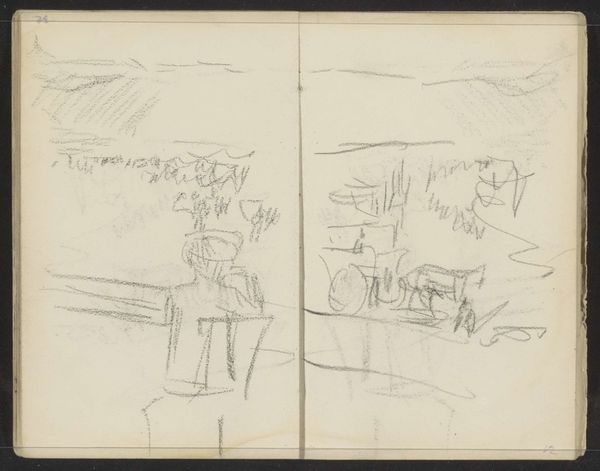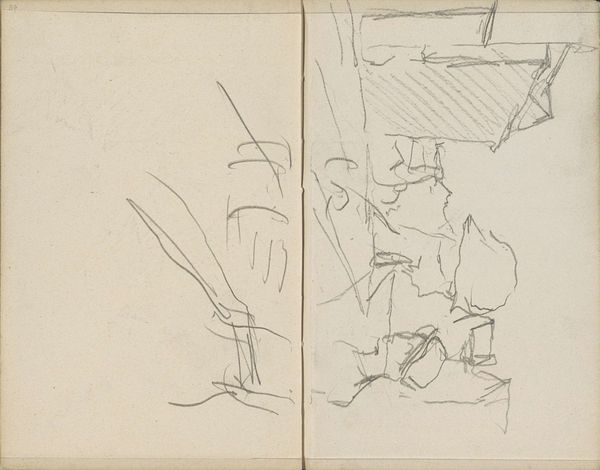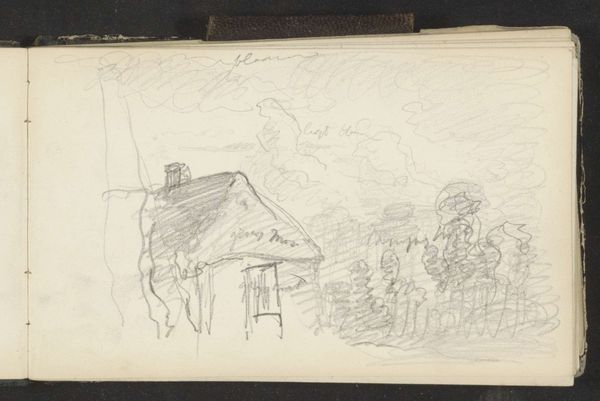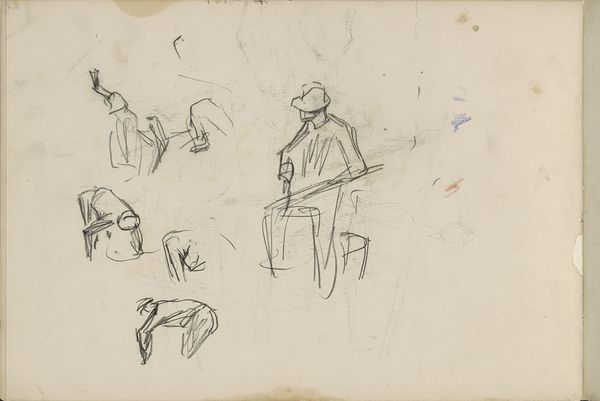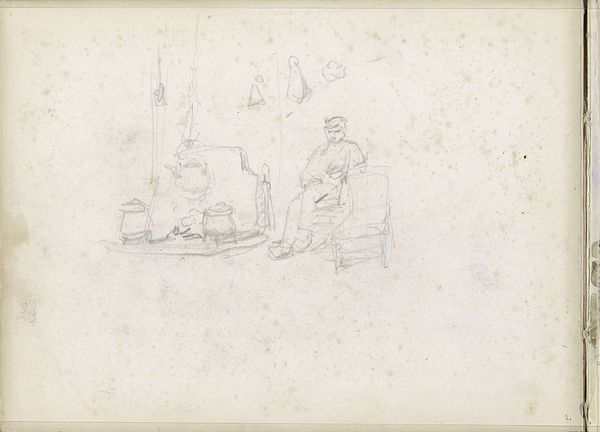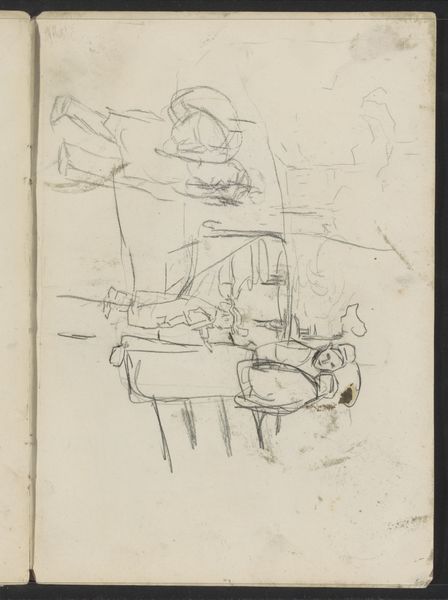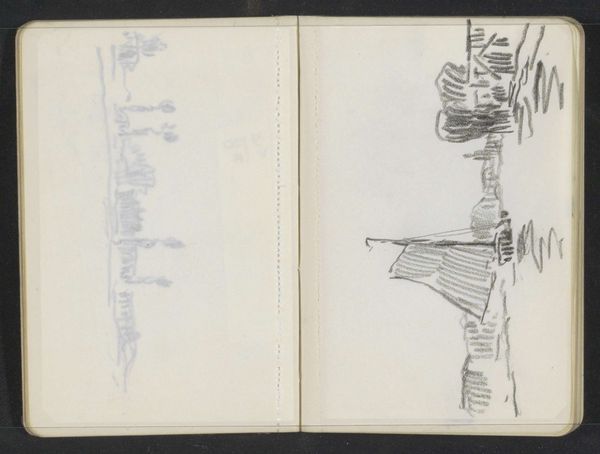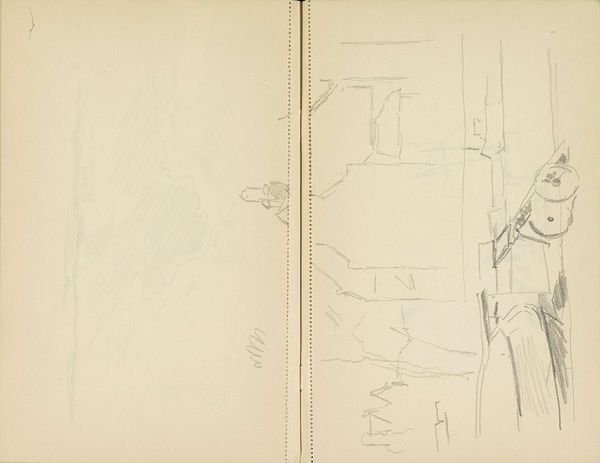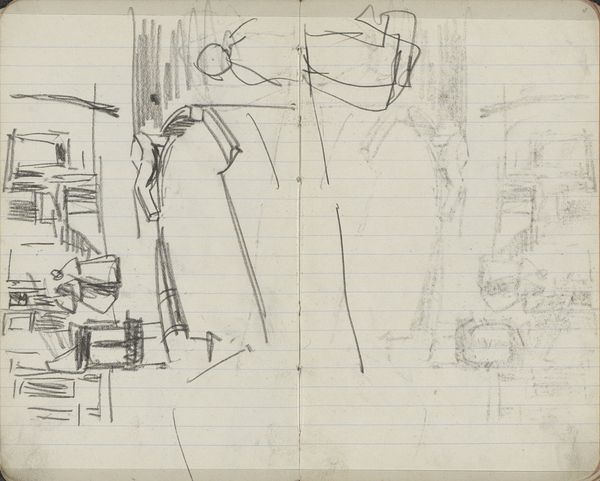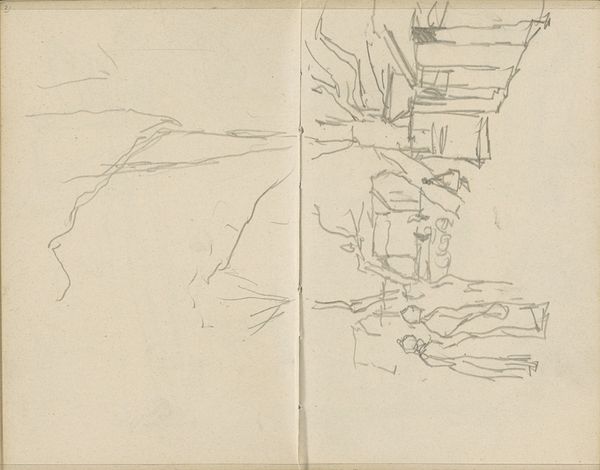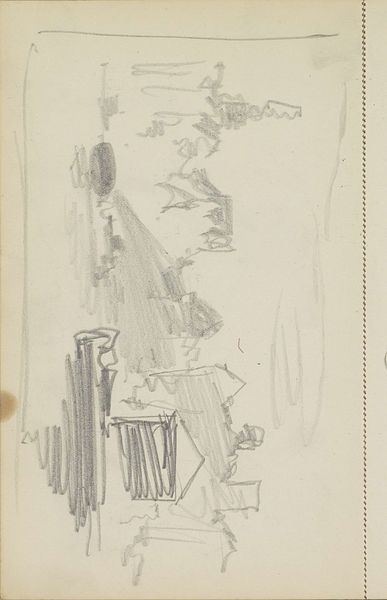
Copyright: Rijks Museum: Open Domain
Curator: This drawing, dating from around 1895-1896, is entitled "Landschap en mannen en vrouwen zittend aan tafels." Done with pencil on paper, the artist offers us not a singular, finished work, but rather a sketch, an impression. Editor: Immediately, I am struck by how fragmented and unresolved it feels. There is a quiet intimacy here, observing individuals in their own spaces, rendered almost weightlessly. The subtle gradations give it a contemplative mood. Curator: Note the impressionistic style, using quick, almost fleeting lines to capture the figures and the landscape. The scenes depicted seem to freeze candid moments, perhaps offering insights into social dynamics within this gathering. Do you see echoes of gendered divisions in the figures' poses and proximities? Editor: The repetition of the table motif draws my eye, especially how these shared tables subtly delineate or connect these isolated figures. Tables appear here like silent altars. I see the echoes of shared meals and common rituals, yet there is something alienating in their isolation. How do we connect ritual with a broader cultural memory of this late 19th century? Curator: Absolutely. Consider the table, the central anchor. For some, it could signify shared experiences, kinship or opportunities of cultural exchange and resistance for marginalized voices in society. While for others the table signifies barriers to access or a platform from which power dynamics and oppression are played out. Editor: It makes me reflect on the transient nature of perception, and of human connection. And it is quite striking to realize the image is a sketch only—suggesting that any symbol or ritual captured in the artwork is in a transient state of constant interpretation. Curator: I agree entirely. In observing what is recorded we're not merely documenting but are offered entryways to question dominant historical narratives. The silences as represented visually by way of erasures in turn become points for resistance in what has been canonized and the structures that continue to oppress the margins. Editor: A poignant reminder of the layered interpretations within what initially seems a quiet, simple drawing. The symbolism is more about questions than answers.
Comments
No comments
Be the first to comment and join the conversation on the ultimate creative platform.
